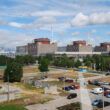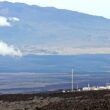Conversion in Kazakhstan: A multiplayer game
By Alexandr Vurim |
International initiatives to reduce the use of highly enriched uranium (HEU) deserve unconditional support, but conversion to low-enriched uranium (LEU) is often a difficult project. Research reactors employ a variety of designs and are used for wide-ranging purposes, and different countries have different views on how conversion should be accomplished. In my own nation of Kazakhstan, preliminary plans are in place to convert three research reactors to LEU fuel. But progress has not been as fast as it might have been.
Why? To answer this, one must understand the bureaucracy surrounding Kazakhstan's research reactors, all of which are owned and operated by government entities. Two of the country's four research reactors, known as IVG and IGR, are owned by the National Nuclear Center and operated by one of the center's divisions, the Institute of Atomic Energy, which is also my employer. A third reactor is owned by the Institute of Nuclear Physics, which is separate from the National Nuclear Center. A fourth reactor is in extended shutdown, with its fuel unloaded, and is of no interest from a conversion perspective.
Conversion to LEU must be approved by two government bodies — the Atomic Energy Agency, which regulates reactors and oversees issues like licensing and safety, and also the Ministry of Industry and New Technologies. The ministry has given its approval for conversion at the IVG and IGR reactors. But the Atomic Energy Agency (soon to be reorganized as the Committee of Atomic Energy) has not. The agency will only give its approval for conversion if the facilities' chief designer and research manager approve changes to the reactors; Kazakh laws and regulations require, for decisions such as LEU conversion, the involvement of each reactor's chief designer and research manager.
And here things get even more complicated, because the reactors' chief designer and research manager are not Kazakh entities. Rather, because of the reactors' Soviet origins, they are government-owned Russian entities that now play a minimal role in the reactors' operation. More to the point, the actions of the chief designer and research manager have, up until now, not been coordinated by any single entity in Russia, leaving the Institute of Atomic Energy to coordinate among them. But it is beyond the institute's capacity to coordinate the actions of entities in another country.
It is useful here to recall the organizational structure that was utilized when research reactors were first established in Kazakhstan. All work was carried out under the unified leadership of the Soviet ministry in charge of nuclear science, energy, and industry. The research manager, chief designer, and operating organization were all part of this ministry, and were connected to one another through a clear set of obligations and responsibilities. This system of interaction helped create the most advanced scientific and industrial sector in the Soviet Union, and one of the most advanced nuclear power industries in the world. Unfortunately, the Kazakh government in general, not to mention the Institute of Atomic Energy itself, lacks the capabilities that the former Soviet ministry possessed.
Faced with all this, representatives of the Global Threat Reduction Initiative, a US project involved in HEU minimization, have attempted to engage with yet another entity, the Russian manufacturer of the reactors' fuel. The idea is that the fuel provider could develop an LEU fuel that would enable the reactors to convert. But this, though it might solve some technical problems, would not solve the bureaucratic problems. The full involvement of the chief designer and research manager would still be required.
The Institute of Atomic Energy is now attempting to circumvent these problems by negotiating with the reactors' fuel provider, in the hope that the fuel provider will take responsibility for coordinating among all Russian entities involved. Indeed, at the Kazakh research reactor operated by the Institute of Nuclear Physics, the conversion effort is proceeding more smoothly, precisely because a Russian, state-owned fuel producer is coordinating among all the relevant Russian entities.
The ideal solution for Kazakhstan's conversion process might have been for representatives of the US government to liaise more with officials in Russia, encouraging the Russian government to take a real interest in the work — to take responsibility for all aspects of the conversion process that involve the competencies of the Russian research manager, chief designer, and fuel manufacturer. In the end, conversion may go forward without that sort of intergovernmental cooperation. But in any event, the Kazakh conversion experience provides an example of the problems that reactors can face while attempting to minimize their use of highly enriched uranium.















